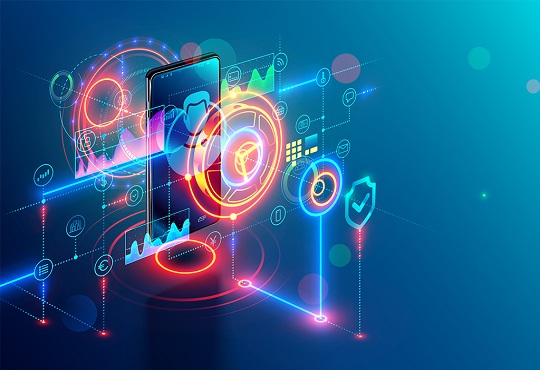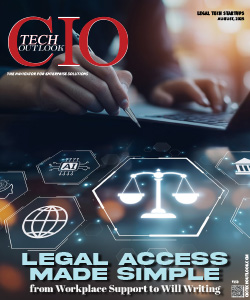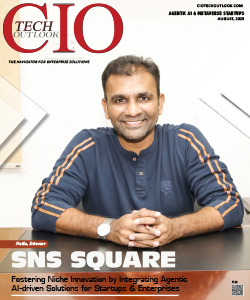5G RAN: The Next Gen Wireless Connectivity
Janifha Evangeline | Thursday, 24 June 2021, 16:46 IST

Intel Corp has announced that it will partner with Reliance Jio to develop 5G networking technology. 5G - the new global wireless standard, enables a new type of network designed to connect virtually that includes machines, devices & objects. Delivering higher multi-Gbps peak data speeds is the main focus of the new 5G wireless technology. While 5G’s higher performance and improved efficiency enhances new user experience, it connects new industries and is more reliable. With massive network capacity and increased availability, it offers a uniform user experience to users.
Forward compatibility
5G is designed for forward compatibility, which means it has the ability to flexibly support future services that are unknown today and this is a defining capability of the new wireless standard. 5G is mainly used across three kinds of connected services. These comprise mission-critical communications, the massive IoT and enhanced mobile broadband.
Usher in immersive experiences
5G mobile technology can open the way for new immersive experiences that include Virtual Reality and Augmented Reality with faster, besides making smartphones better, and also with more uniform data rates, lower cost-per-bit & lower latency.
Mission-critical communications
5G has the potential to enable new services, which can transform industries with ultra-reliable, and low-latency links. These include the remote control of critical infrastructure, medical procedures & vehicles.
Furthermore, 5G is also designed to seamlessly connect a multitude of embedded sensors virtually. This can be achieved through its ability to scale down in data rates, power and mobility, while providing extremely lean and low-cost connectivity solutions.
Transforming lives of people in cities
5G can be used in Smart cities in numerous ways in order to transform the lives of people. They can be used in offering greater efficiencies such as higher connectivity between people and things. Furthermore, 5G can also be used in rendering higher data speeds, and lower latency than ever before in segments that include automotive safety, infrastructure, Virtual Reality & entertainment.
Innovations
5G in automotive: EVs, Self-driving & surging demand for personalized in-car experiences are the top 3 trends transforming the auto industry. However, what will truly define the modern car is connectivity. The ability to connect cars to networks, the cloud, infrastructure & mobility services, pedestrians, and other vehicles.
An American MNC that is into creating semiconductors, and software & services related to wireless technology, with more than 3 decades of mobile technology leadership, has developed an extensive product portfolio using its mobile and compute platforms.
The company is assisting automakers to build vehicles using one of the most advanced telematics. These are integrated with C-V2X, Wi-Fi, Bluetooth & precise positioning technologies. The company’s 4G & 5G permits automakers to meet the surging demands of personalized and premium driving experiences, while these are powered by 4G LTE & 5G connected services. By holding decades of experience in the automotive industry, the company also helps automakers in developing vehicles with digital cockpits, ADAS driving, and Car-to-Cloud Solutions.
Driving Economic Growth & sustainability
Perseverance in technological innovation is not only facilitating a timely economic recovery but it is also expected to drive prosperity in a post pandemic era and 5G acts as a vital factor that helps in this evolution. 5G advances mobile from connecting people-to-people, people-to-information, to a unified connectivity connecting people to everything and delivers numerous benefits such as sustainability benefits.
5G’s sustainable benefits
Decreasing carbon Emissions
Efficiencies in 5G network equipment can help in decreasing carbon emissions from mobile networks by fifty percent in the coming decade.
Reduces Pollution
- 5G drones by using Artificial Intelligence/Machine Language technologies to eradicate targeted weed can decrease the usage of pesticide and herbicide by fifty percent.
- Also, 5G enabled Intelligent Transportation System can result in fifteen percent less traffic.
Energy Efficiency
5G enabled mIOT devices are built intending to provide a longer battery and device life-time, when compared to that offered by the previous technology.
5G RAN
While 5G is all about connecting things everywhere, it is also about enabling new use cases. A 5G Radio Access Network also popularly known as RAN uses 5G Radio frequencies to offer wireless connectivity to devices in order to deliver incredible applications. Furthermore, new 5G use cases will deliver new revenue streams for CSPs and new connectivity opportunities for subscribers and it comprises use cases such as: cloud gaming, Augmented Reality/Virtual Reality, self-driving and Fixed wireless access.
Recently, Intel has announced that it will partner with Reliance Jio and will work on “co-innovations” for its 5G RAN.
"This is the fruit of that partnership," Navin Shenoy, executive vice president and general manager of the data platforms group at Intel, told Reuters in an interview. "5G in India is going to be massive, and (Reliance Jio) are doing it in a non-legacy way."
Dan Rodriguez, general manager of Intel's network platforms group, said, “Part of that growth has come from Intel's decision nearly a decade ago to invest in software akin to an operating system for its network chips.” Flex RAN, is the system that allows carriers or software firms to code for 5G networks.
Future of 5G technology in global economy
In the next ten years, millions and millions of connected devices would come online and would require to transmit huge amount of data, reliably. Therefore, in order to enable such connectivity, the wireless technology needs to be enhanced.
According to landmark 5G Economy study, it was discovered that 5G’s full economic effect will be realized around the world by 2035. It is found that this will support a multitude of industries, by enabling around USD 13.1 trillion worth of goods and services.
This impact is found to be much greater than the earlier network generations such as 1G, 2G, 3G & 4G. Furthermore, the development requirements of the 5G network is expanding beyond the traditional mobile networking players, specifically to industries like automotive.
The study also stated that the 5G value chain such as Original Equipment Manufacturers (OEMs), operators, content creators, app developers etc. could support up to 22.8 million jobs, while there are many other emerging and new applications which will be defined in the future.




.jpg)